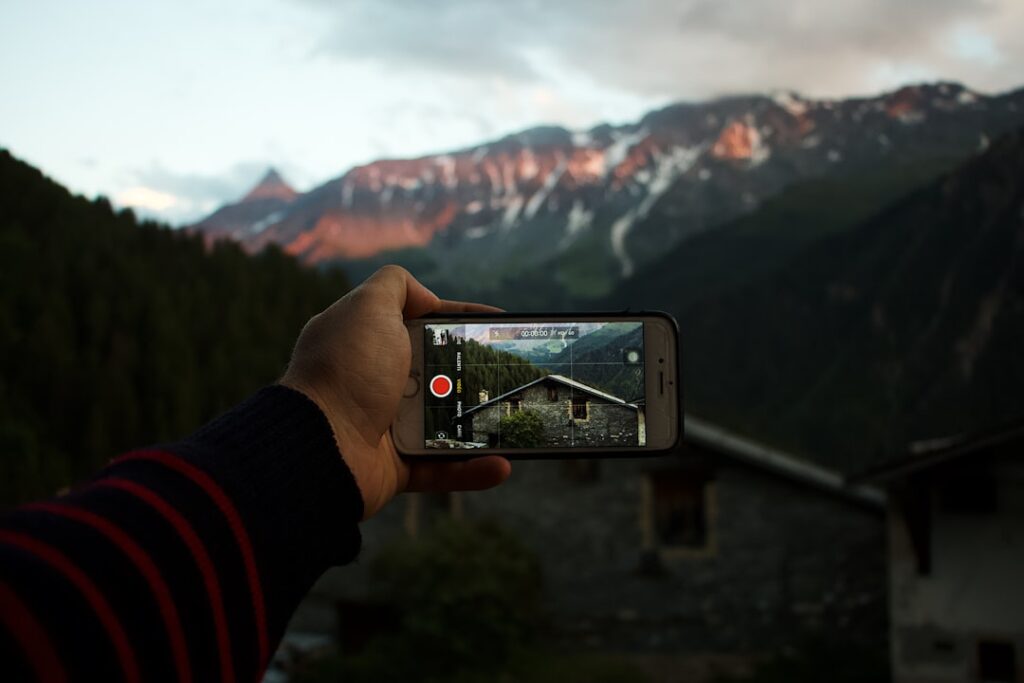My digital archives tell a story of diminishing returns. After a 10-day trip to Portugal in 2022, I returned with 1,488 smartphone photos. An analysis of this dataset revealed a troubling statistic: I ultimately kept and valued fewer than 5% of them. The rest were a digital fog of near-duplicates, blurry shots, and compositions that failed to capture the essence of the moment. More importantly, my memory of the trip felt outsourced to my camera roll. I had an archive of images, but a deficit of embodied experiences.
For my recent two-week summer trip through the Scottish Highlands, I decided to conduct a personal experiment. My hypothesis was that by systematically reducing the quantity of photos and increasing the intentionality behind each shot, I could improve both the objective quality of my photographs and my subjective experience of the trip. I would approach smartphone photography not as a reflexive action, but as a deliberate, data-tracked process.
The Methodology: A Framework for Mindful Capture
To ensure measurable outcomes, I established a strict protocol for the 14-day duration of the trip. My goal was to gather quantitative and qualitative data on how these constraints affected my photography and my presence.
- The Five-Minute Observation Rule: Upon arriving at any location I deemed photo-worthy, I was forbidden from touching my phone for the first five minutes. The entire period was dedicated to pure observation: noticing the light, the sounds, the smells, and the details my eyes were naturally drawn to.
- The Three-Composition Limit: For any given subject or scene, I was limited to a maximum of three distinct photos. This forced a pre-shot analysis of composition, lighting, and subject matter, eliminating the “spray and pray” approach of taking ten near-identical pictures.
- The End-of-Day Workflow: All photo review, editing, and social media posting was batched into a single 30-minute session each evening. This completely removed the dopamine loop of instant sharing and feedback from the act of capturing the image itself.
- Daily Data Logging: Each night, I logged three key metrics: total photos taken, total time spent on photo-related phone activity (shooting and editing), and a self-reported “Presence Score” on a scale of 1-10, representing how much I felt I was “in the moment” that day.
The Results: A Quantitative Analysis
The data collected over the 14 days provided a clear and compelling validation of my hypothesis. When compared to the baseline data from my previous 10-day Portugal trip (extrapolated to 14 days for a more direct comparison), the results were significant.
- Photo Volume Reduction: I took a total of 297 photos during the 14-day trip. This represents an 83% reduction from the projected 1,785 photos I would have taken based on my previous travel habits.
- Increased Keeper Rate: After returning, I conducted a thorough review. Of the 297 photos, I flagged 112 as “high quality” keepers—photos I would print, share widely, or consider part of my best work. This is a keeper rate of 37.7%, a dramatic increase from the estimated <5% on my previous trip.
- Improved Presence Score: My average daily “Presence Score” was 8.7/10, compared to a retrospectively estimated score of around 5/10 for the previous trip, where my attention was constantly fractured by the impulse to capture everything.
- Time Reclaimed: The most impactful metric was time. My daily average time spent on all photo-related phone activities plummeted from an estimated 90+ minutes to a logged average of 28 minutes. Over the two weeks, this simple framework reclaimed over 14 hours of my vacation.
Conclusion: From Data to Practice
This experiment confirmed that the relentless drive to document can paradoxically degrade the very experiences we want to preserve. By imposing analytical constraints, I didn’t just take better, more thoughtful photos; I fundamentally enhanced my ability to create lasting memories. The data doesn’t lie: fewer, more intentional photos correlate directly with a richer, more present travel experience. The ultimate “keeper” wasn’t just a JPEG file, but the fully-felt memory of the Scottish wind on my face, a moment I experienced completely before ever reaching for my phone.
Photo by Maël BALLAND on Unsplash

